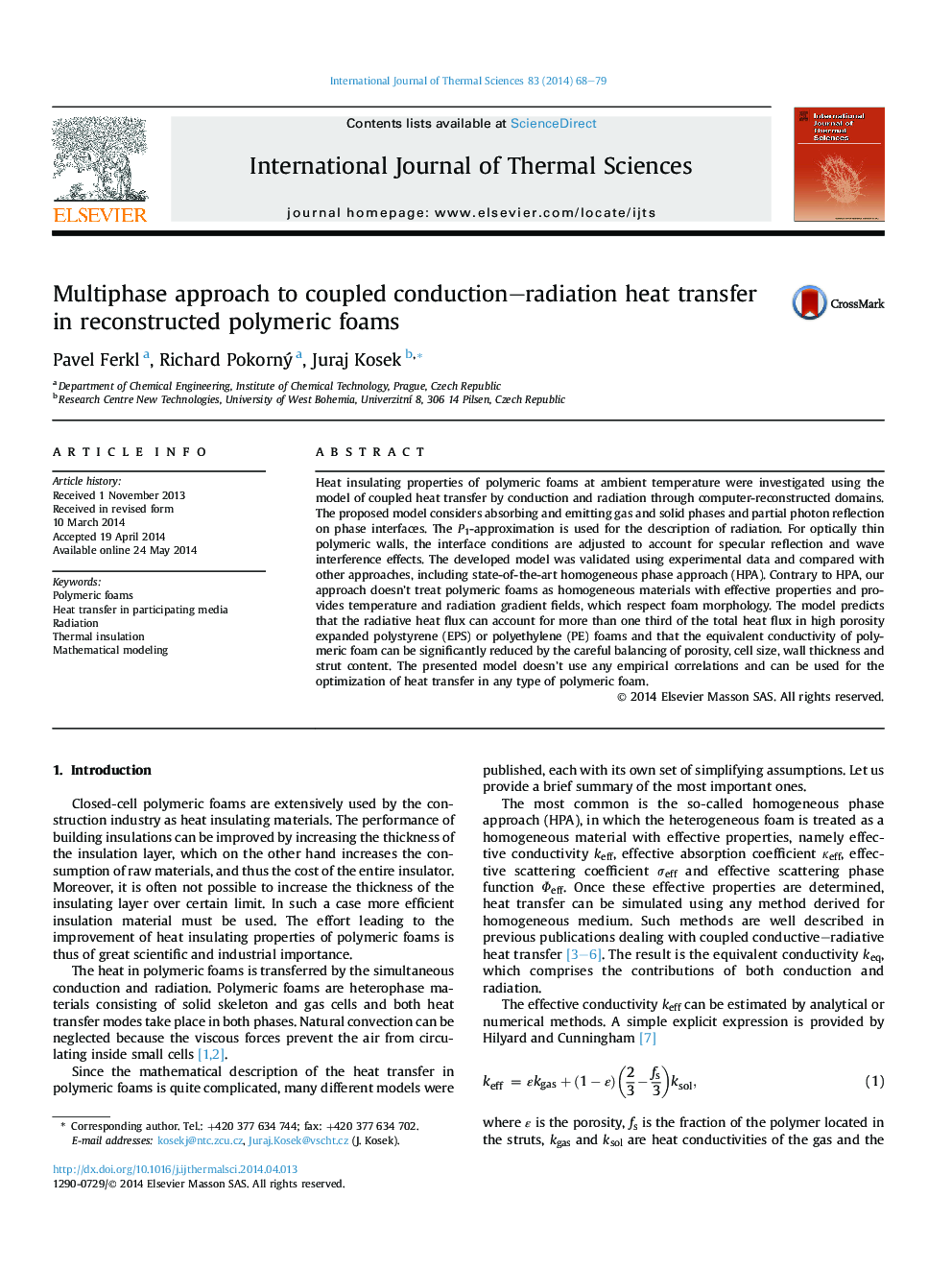| کد مقاله | کد نشریه | سال انتشار | مقاله انگلیسی | نسخه تمام متن |
|---|---|---|---|---|
| 668270 | 1458739 | 2014 | 12 صفحه PDF | دانلود رایگان |
• We studied coupled conductive–radiative heat transfer in polymeric foams.
• Model does not treat foam as a homogeneous material with effective properties.
• Developed model solves temperature and intensity field in both phases.
• Foams are treated as participating media with reflection on phase interfaces.
• Conductivity can be reduced by balancing of porosity, cell size and wall thickness.
Heat insulating properties of polymeric foams at ambient temperature were investigated using the model of coupled heat transfer by conduction and radiation through computer-reconstructed domains. The proposed model considers absorbing and emitting gas and solid phases and partial photon reflection on phase interfaces. The P1-approximation is used for the description of radiation. For optically thin polymeric walls, the interface conditions are adjusted to account for specular reflection and wave interference effects. The developed model was validated using experimental data and compared with other approaches, including state-of-the-art homogeneous phase approach (HPA). Contrary to HPA, our approach doesn't treat polymeric foams as homogeneous materials with effective properties and provides temperature and radiation gradient fields, which respect foam morphology. The model predicts that the radiative heat flux can account for more than one third of the total heat flux in high porosity expanded polystyrene (EPS) or polyethylene (PE) foams and that the equivalent conductivity of polymeric foam can be significantly reduced by the careful balancing of porosity, cell size, wall thickness and strut content. The presented model doesn't use any empirical correlations and can be used for the optimization of heat transfer in any type of polymeric foam.
Journal: International Journal of Thermal Sciences - Volume 83, September 2014, Pages 68–79
